- About Cargilfield
- Admissions
- Learning for the 21st Century
- Nursery
- Pre Prep
- Upper School
- Boarding
- News
- Essential Information
- Former Pupils
- Contact Us
Learning multiplication tables
How can we help the children learn their tables?
This is perhaps one of the most commonly asked questions, asked by parents over the years. It is not always straightforward to answer, as different approaches work for different children. However, these are some ideas to try out, that I hope may help your children.
Condensing the task
Realising that they do not have to learn so many facts can come as a welcome relief. The commutative law means that 4 × 5 is the same as 5 × 4. So, when the children advance in their acquisition of the tables they start to realise they already know them, just the other way around.
If they know 3 × 8, they already know 8 × 3.
This picture of a “jojo” from Shanghai shows how Chinese children use a different pictorial representation when they are learning their tables. The learning is condensed.
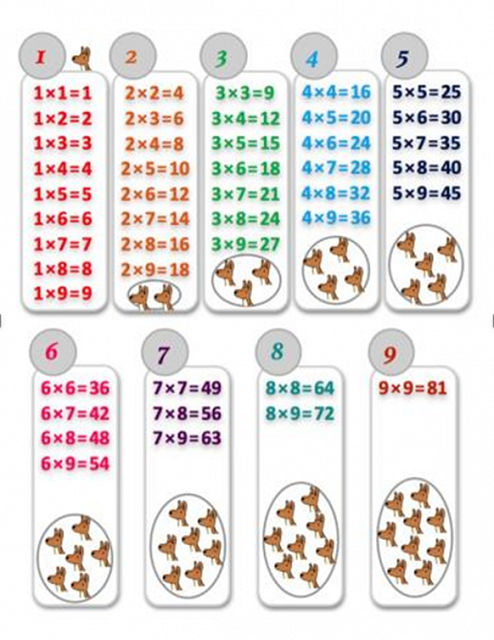
At Cargilfield we put the emphasis on learning the tables up to × 12, both as multiplications and divisions. We also stress to the children that they do not stop at × 12. Remembering that anything multiplied by 0 is 0 is important. This is an example of how we learn the 6 times table.
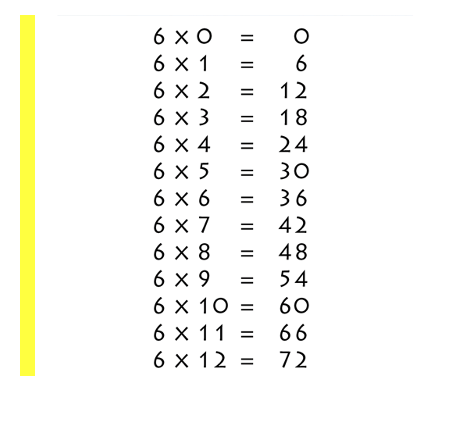
A multiplication grid like the one below is often used to help the children revise the facts and to learn how to see them as divisions also.
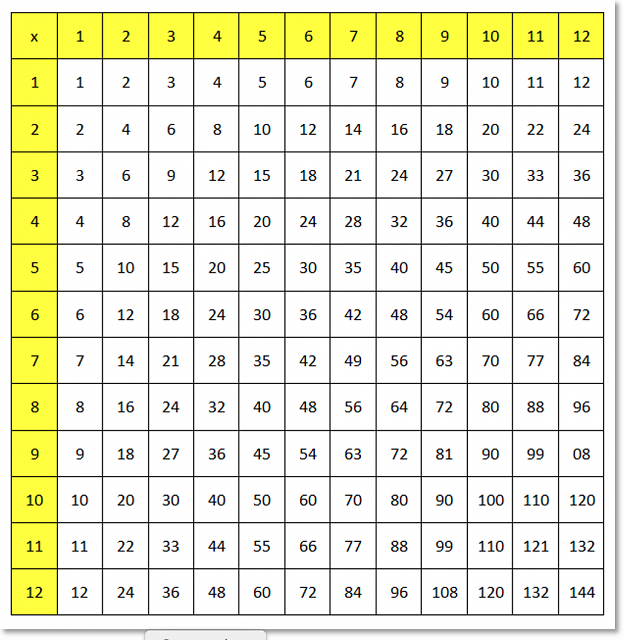
Chanting the tables
Chanting the tables with some movement, perhaps jogging on the spot, can be very effective. Movement can be very helpful. Mrs Collier, who runs a weekly times table club for the Form 4s and Form 5s, recently had the children following a trail of timetables questions around the room, challenging the children with the question, “How far can you go?”
Some children learn the tables pointing or tapping parts of their body as they recite the tables. They could perhaps do some aerobic moves as they chant them. Exercise helps us concentrate and can improve our mood and it’s fun!
Competition with siblings or parents is often a winner! Sibling rivalry can drive on learning.
Games for the car or out walking
Fizz buzz is a game where the children count. When they reach a multiple of 3, they have to say Fizz instead of the number, when they reach a multiple of five, they have to say Buzz, and of course, Fizz Buzz is required for multiples of both 3 and 5. Lots of fun and easy to adapt, for example with multiples of 3 and 6, or multiples of 4 and 8. Perhaps you could develop your own special words in place of Fizz and Buzz!
Sevens is also a counting game. The children start counting, with the first child to reach 7 saying instead a word of their choice, e.g. Bananas. From that point on, all numbers with a 7 in them, or a multiple of 7 or a number with digits the same, e.g. 11, 22, 33, are replaced by the chosen word. Lots of excellent listening and focus are required for this game and knowing the multiples, of course. The starting numbers could be any other single digit number.
Visual prompts and rhymes
Telling a story about or making a picture of a table fact can help the memory. This is an example of some work from a Form Five child. It helped her learn the facts and has been useful for the other children too.
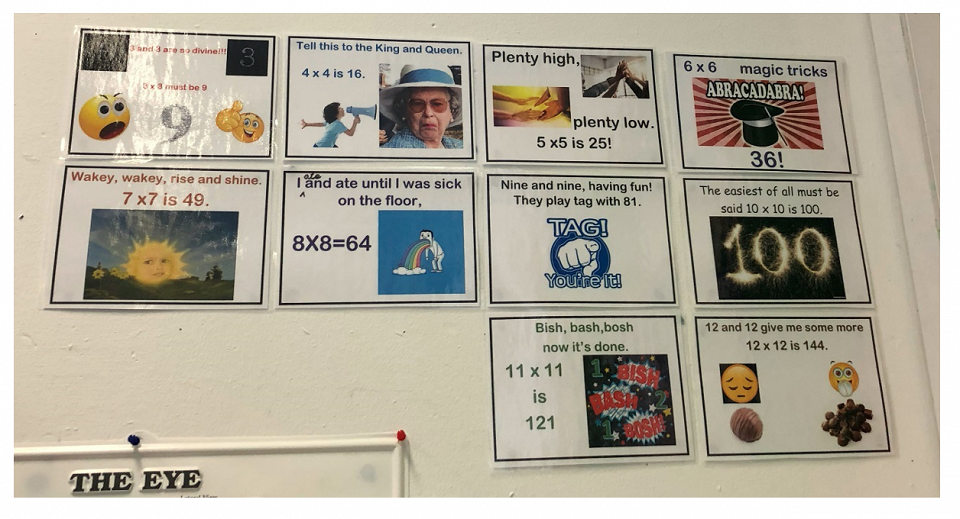
Focus on the most difficult. The seven times table is often considered to be the most challenging.
7 × 8 = 56 could be stuck up in the child’s bedroom or on doors until it is mastered. Try this with whichever fact the child is finding difficult to master and celebrate the facts they already know.
Computer Games
Online computer games can be very helpful giving lots of useful repetition. Examples include:
www.timetables.co.uk , hit the button (www.topmarks.co.uk ) and www.mathsframe.co.uk
This are used successfully in Times Tables Club at school. Parents might like to use them as a reward for the children, allowing them to practise once they have been introduced to each table.
Rewards!
Putting in the effort pays off handsomely as much of the work in the Upper School requires the children to be secure in their multiplication and division tables. As we say they need to know them both ways. They also need to have the answer in their heads as an immediate response, to have fluency. Research has shown that if children can commit these key facts to memory, their working memory is freed to enable deeper and more complex learning.
Of course, teachers then need to help build their conceptual understanding, their relational understanding and also an understanding of the structure of operations.
I enjoy it when the children realise that knowing:
2 × 3 = 6 also allows them to know 2 × 30 = 600 2 × 300 = 600 and further.
and of course, moving in the other direction:
0.2 × 3 = 0.6 0.2 × 30 = 6 etc.
Knowing these basic facts and using their knowledge of place value can open up so much more maths. It gives them power!
In my class we call moving from 2 × 3, to 2 × 30 and 2 × 300 super sizing,
and moving in the other direction to 2 × 0.3 super shrinking!
We have been working hard to develop our super powers and the children are enjoying doing so. Learning the multiplication tables is critical but having fun can help the learning.
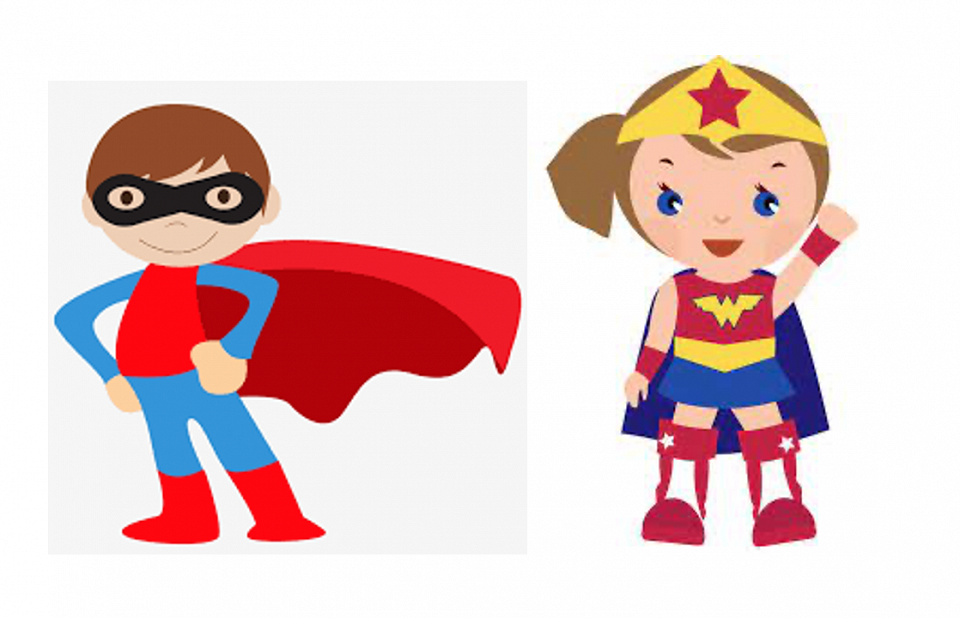
Posted on
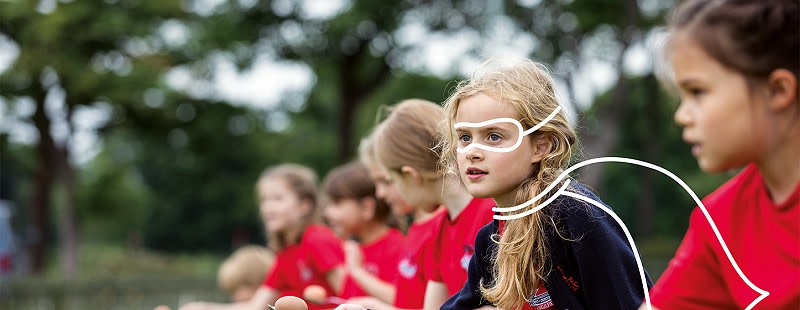
Join us on Friday 2 May between 9am and 12pm to discover what makes Cargilfield truly special.